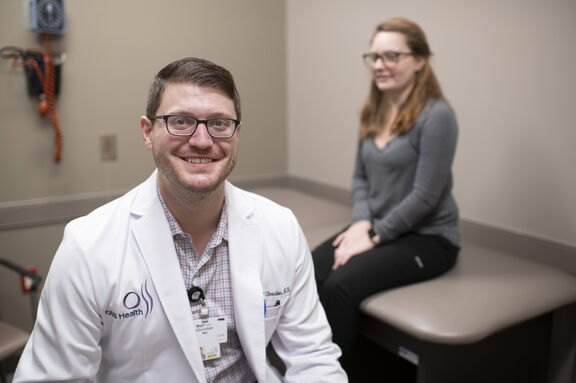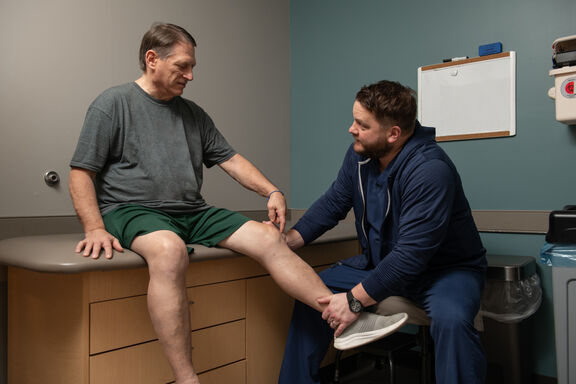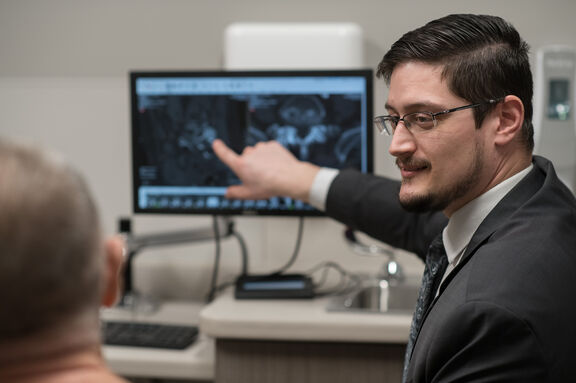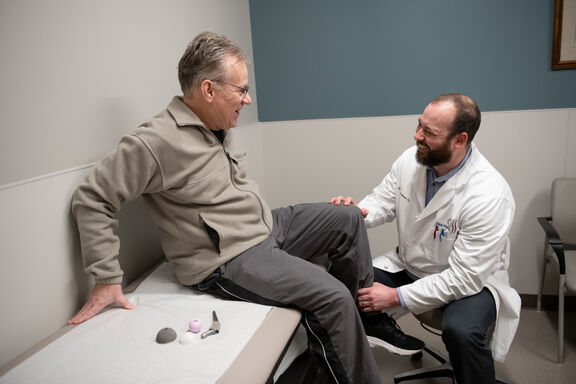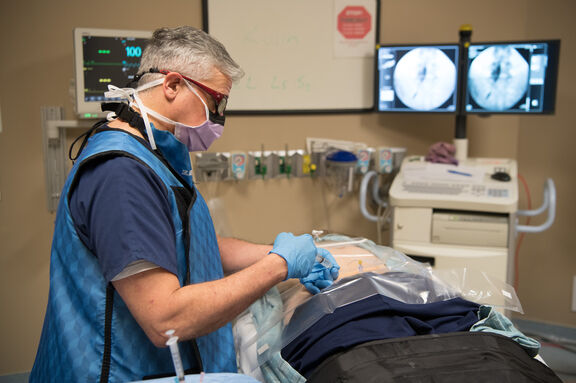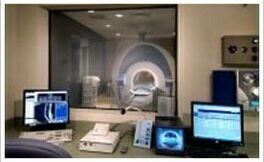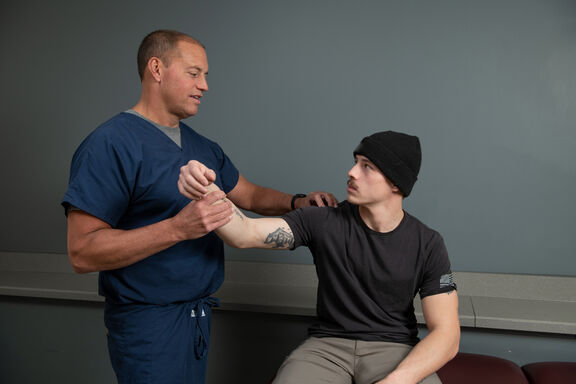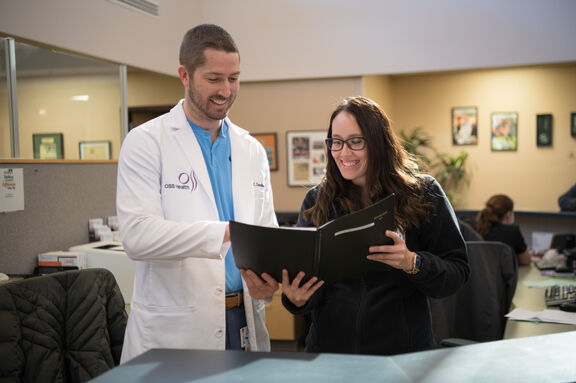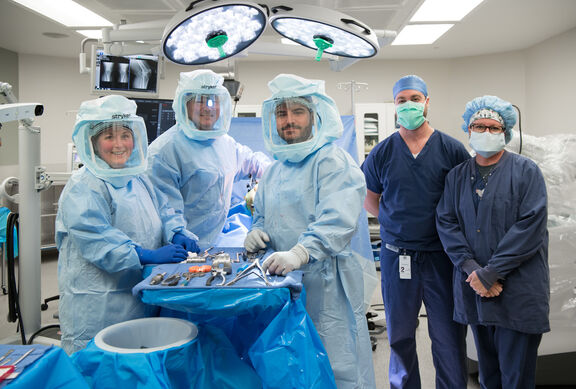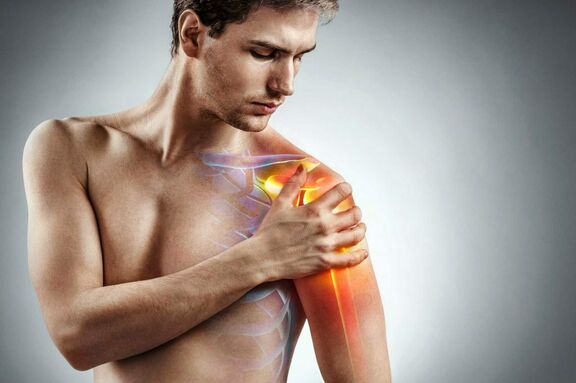Rotator Cuff Tear
Shoulder Pain Treatments
What is a Rotator Cuff Tear?
The rotator cuff consists of four muscles located at the back of the shoulder and attaches to the top of the shoulder. The rotator cuff helps hold the shoulder in its socket and maintains stability as the shoulder rotates and raises the arm. Rotator Cuff Tears can be caused by an accident or injury, such as a fall or direct impact onto the shoulder, or as the result of wear and tear of the shoulder.
Rotator Cuff Tears are usually classified into two groups and the treatment for your injury may be based on the severity of the tear as well as your unique lifestyle.
Partial-thickness tear. One or more tendons within the rotator cuff have been damaged but are not completely torn.
Full-thickness tear. One or more tendons within the rotator cuff are torn completely from their attachment to the bone.
If you have a Rotator Cuff Tear the common symptoms can include:
-
Pain in the form of a deep ache
-
Stiffness
-
Difficulty rotating and/or lifting the arm
-
Pain that is often worse at night
If you are experiencing symptoms of a Rotator Cuff Tear, it is best to make an appointment with one of the Board Certified Orthopaedic Surgeons at OSS Health as soon as possible. Delaying treatment may cause the tear and its symptoms to become worse. At OSS Health, our Board Certified Orthopaedic Surgeons have helped thousands of patients with Rotator Cuff Tears live active and healthy lives using the latest non-surgical and surgical procedures.
How is a Rotator Cuff Treated at OSS Health?
Depending upon the classification of the tear, nonsurgical treatment options may be used to reduce pain and inflammation and strengthen the shoulder. These can include:
- Nonsteroidal anti-inflammatory drugs
- Physical Therapy
- Cortisone Injections
In other cases, your OSS Health specialist may recommend surgery to repair a Rotator Cuff Tear using a procedure known as Arthroscopic Rotator Cuff Repair if non-surgical treatments have not provided pain relief. This procedure uses two small incisions as well as a small surgical camera and small surgical instruments to repair the damaged tendon and reattach to its intended position in the shoulder.

